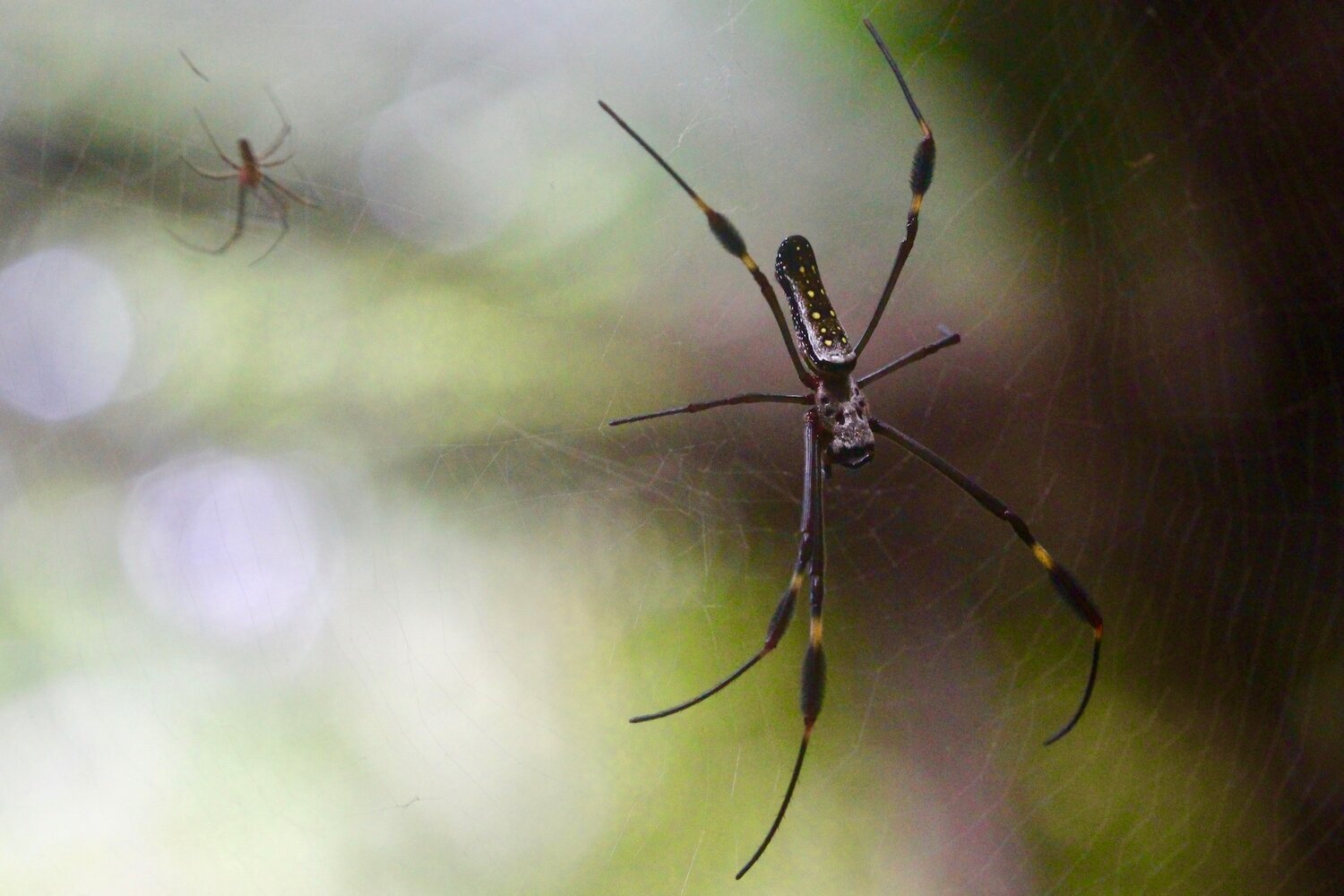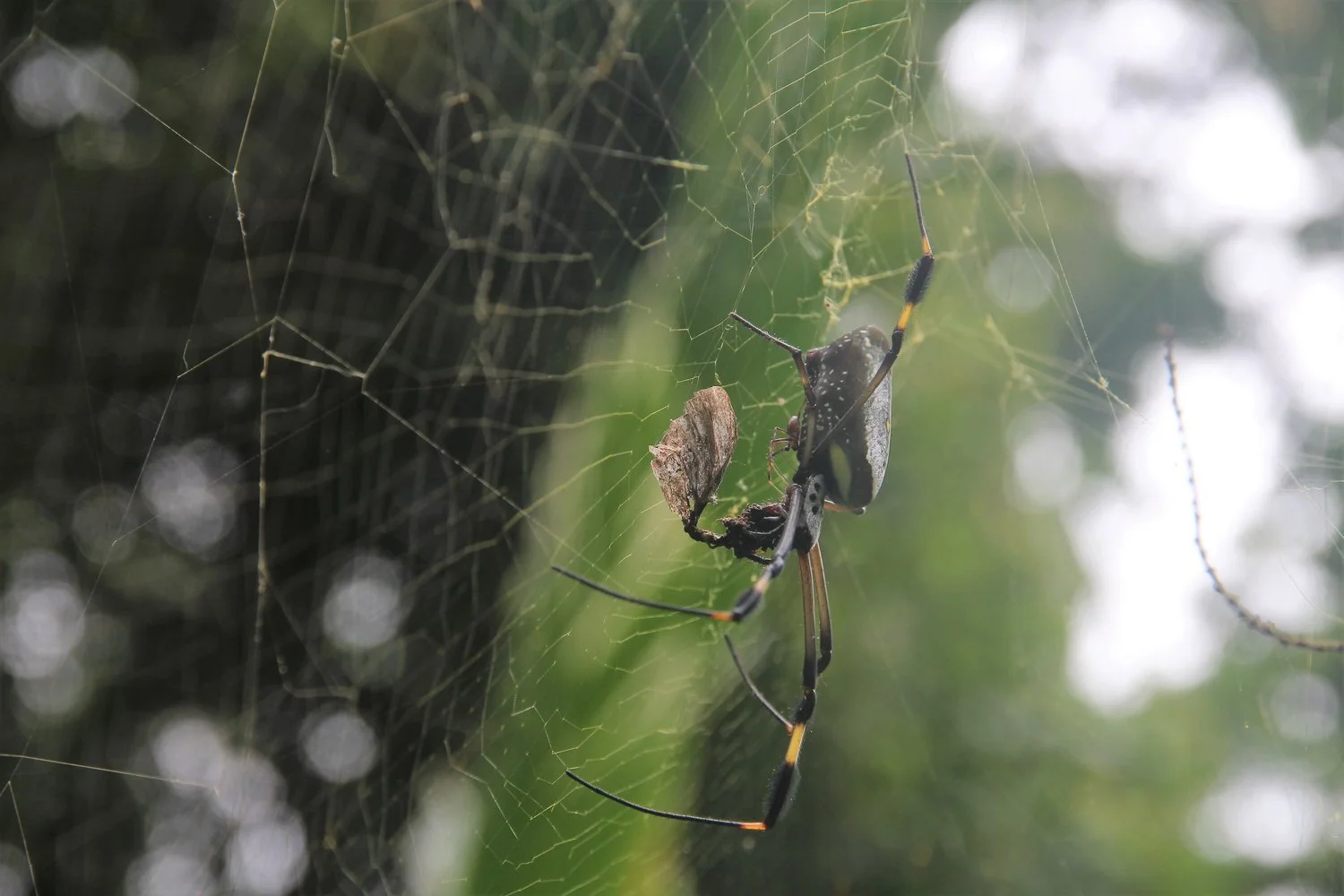Golden Silk Orb Weaver
by Katie (resident biologist from the University of Cambridge)
“Seriously misunderstood creatures, spiders are. It’s the eyes, I reckon. They unnerve some folk.” – Hagrid
“Not to mention the pincers.” – Harry
This tragically amusing scene from ‘Harry Potter and the Half-Blood Prince’ succinctly summarises how many people feel about spiders. I’ve never been an arachnophobe, but nor can I say that I found these wee beasties particularly fascinating before coming to Costa Rica. However, since arriving I’ve been captivated by the remarkable diversity of spider life: more than 20,000 different species of arachnid can be found here, and they are well worth getting to know a little better. It's also worth remembering these spiders are non-aggressive and don’t leave their webs!
The male golden silk orb weaver typically weighs in at just 1/50th the mass of the female…
…and can only mate with her when she is feeding and thus sufficiently distracted!
While the golden silk orb weaver (also known as golden orb, golden orb weaver, giant wood spider, or banana spider) may lack the charisma of a jaguar or the majesty of a humpback whale, it has its own unique ability to inspire awe. Through their masterful engineering, these astounding yet diminutive creatures show that size is no barrier to greatness.
Nephila clavipes, the sole species of golden silk orb weaver native to Central America, is abundant in the tropical garden of Golfo Dulce Retreat in Costa Rica. With its distinctive black and yellow markings and impressive webs, it is hard to miss. The incredible feats of construction which these spiders call home can be seen spanning gaps more than 2 metres wide, the equivalent of 40-times the body length of the larger females.
The golden silk orb weaver’s web has dual offence-defence functions: while sticky inner threads trap unsuspecting prey, non-sticky barrier webs form a 3-dimensional shield against aerial attack from birds and damselflies. The lustrous gold of these webs is the product of a yellow silk pigment, composed of carotenoids, xanthuric acid and quinones. The spectral reflectance of these strands matches the visual range of insects such that, when bathed in sunlight, the web is a tempting lure for bees on the hunt for flowers. The coloration additionally works as camouflage in shaded spots.
A complex system of barrier threads and aggregation of the webs of multiple females creates a defensive blockade, protecting the spiders from predation.The circles show two female golden orbs, and the lines mark the edge of the central web, attached to nearby bushes by 2m long support strands.
One of the most phenomenal aspects of this spider silk is its tensile strength, which is 8-times that of steel. This property, along with a complex spring design, allows webs to absorb the impact force of predators and prey moving at speed without breaking.
Not only are spiders vital contributors to jungle ecosystems, but they may well be integral to future medical advancement in the field of neuronal regeneration and reconstructive surgery. A recent study by Radtke et al. revealed the potential for using the silk of N. clavipes to assist in guiding peripheral nerves to bridge gaps, leading to recovery of function. The substance acts as an enhancer of remyelination and Schwann cell migration, with the lack of human immune response to silk proteins making it safe to use.
The level of pigment used in building the golden silk orb weaver’s webs can be varied depending on the colour of surrounding foliage and light intensity, while the spiders’ own coloration serves as a warning flag to predators.
The golden silk orb weaver epitomises the grandeur of the arachnids of Costa Rica, proving that strength and innovation are not just a quality of the bigger and better-known fauna of this beautiful country.




